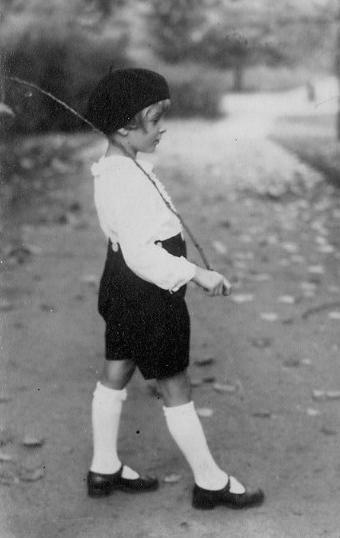
Berets: Gender Trends

Figure 1.--This unidentified boy was photographed in the 1920s. We are guessing he is French, but he may be German. Befopre World War I the beret was primarily a male garment. After the War we begin tgo see more girls wearing berets. We also see younger boys in several countrues (America and Germany) wearing berets. This boy wears a blouse, button-on shorts, white knee socks, and strap shoes.
|
|
Gender conventions concerning berets have varied over time and from country to country. Before World War I, as best we can tell, the beret was primary a boy's garment. This began to change after the War in the 1920s and 30s. After World War II, the beret became more of a girl's gsrment, except when worn with uniforms. Here the trends, especiaslly the time line, varied from country to country. This is a little difficult to assess becuse most school portraits are posed without headwear. And dated class portraits care one of the best ways of following piopulsr fashion. A few available French school portraits show the boys wearing berets, but not the girls. A good example is the French boys in a Casablanca school in 1929. In America the beret was considered more girl's headwear than a boy's garment, although younger boys also wore them when dressing up. There were also differences over time. We see some private schools adopting the beret as part of girl's school uniform, this became especially prevalent after World War II when fewer boys were wearing berets. Berets were also adopted by some youth groups, but more by boys' groups than girls.
HBC

Navigate the Boys' Historical Clothing Web Site:
[Return to the Main beret page]
[Return to the Main hair style page]
[Introduction]
[Activities]
[Biographies]
[Chronology]
[Clothing styles]
[Countries]
[Topics]
[Bibliographies]
[Contributions]
[FAQs]
[Glossaries]
[Images]
[Links]
[Registration]
[Tools]
[Boys' Clothing Home]
Created: 3:44 PM 7/20/2010
Last edited: 3:44 PM 7/20/2010



